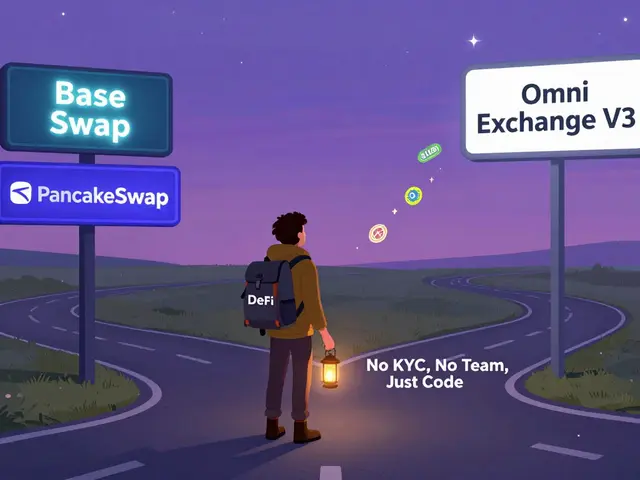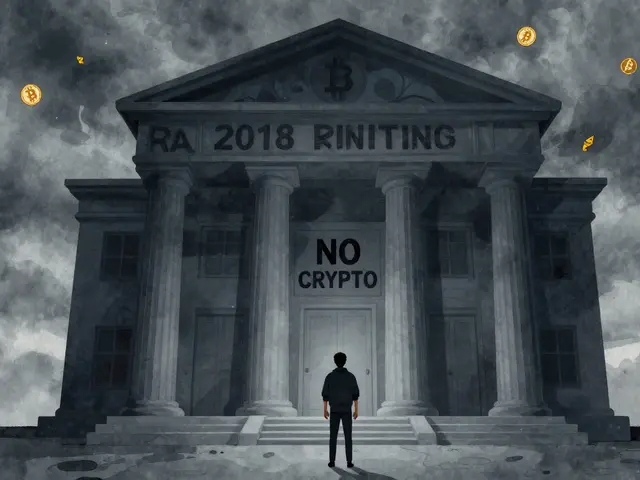Stablecoin Restrictions: Rules, Risks, and Real‑World Impact
When dealing with stablecoin restrictions, the legal and compliance limits that govern how algorithm‑backed coins can be issued, transferred, and used, investors and developers quickly run into regulatory frameworks, the bodies of law and policy that shape crypto markets worldwide. These frameworks are tightly coupled with anti‑money‑laundering (AML) requirements, rules that force reporting of suspicious transactions, identity verification, and record‑keeping. At the same time, traditional banks enforce banking compliance, procedures that control how fiat and digital assets move through the financial system, including travel‑rule checks and licensing. Finally, regulators publish stablecoin risk assessments, analyses of collateral quality, redemption mechanisms, and systemic exposure that influence which tokens are deemed safe. Together these pieces form a network: stablecoin restrictions encompass regulatory frameworks, they require AML requirements, and they shape banking compliance, which in turn informs stablecoin risk assessments. Understanding this web helps you avoid hidden fees, stay compliant, and pick tokens that match your risk tolerance.
Why the Rules Matter for Users and Projects
From the XTUSD stablecoin on the XT platform to how Venezuelan citizens rely on USDC and USDT to dodge hyperinflation, the real‑world impact of these rules is clear. In the United States, the CLARITY and GENIUS Acts of 2025 define stablecoins as digital commodities, forcing issuers to file periodic disclosures—a direct stablecoin restriction that boosts market transparency. Cyprus’ banking limits on crypto transactions set travel‑rule thresholds that can block cross‑border payments, showing how banking policies can bottleneck adoption when they clash with global token flows. Iran’s sanctions environment pushes traders to use VPNs, yet AML reporting still applies, illustrating that crypto compliance does not disappear under pressure. Each of these cases demonstrates clear semantic triples: “Regulatory frameworks enforce AML requirements,” “Banking compliance shapes stablecoin risk assessments,” and “Stablecoin restrictions affect cross‑border payments.” Moreover, the recent rise of stablecoin‑backed airdrops, such as the XTUSD‑linked reward programs, highlights how issuers must design tokenomics that survive scrutiny from both regulators and banks. The trend is unmistakable—every new stablecoin launch now comes with a checklist of licensing, collateral audits, and KYC procedures, echoing the broader shift toward institutional‑grade oversight.
Below you’ll find a curated set of articles that break down specific stablecoins, dissect regional regulations, and offer step‑by‑step guides for staying on the right side of the law. Whether you’re hunting for a low‑risk stablecoin like XTUSD, evaluating the impact of new U.S. statutes, or figuring out how to keep your crypto wallet safe in a restricted banking environment, this collection equips you with practical insight you need to act confidently. We also cover how multi‑jurisdictional rules in Cyprus, Iran, and Venezuela shape the way stablecoins are used for remittances, savings, and everyday purchases. Dive in to see real examples, risk‑focused analysis, and actionable tips that turn complex compliance language into everyday decisions.
Crypto Exchanges to Avoid for Iranian Users (2025 Guide)
Learn which crypto exchanges Iranian users should avoid in 2025, why they're risky, and how to keep your digital assets safe under sanctions.





